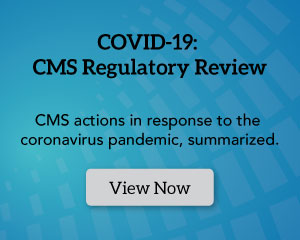Additional Capital for Small and Mid-Sized Businesses.
The Fed can purchase up to $600 billion in loans through the Main Street Lending Program.
NIC continues to provide updates on the many aspects of the COVID-19 pandemic effecting the seniors housing and care industry. In keeping with NIC’s mission of providing information and transparency to operators and other stakeholders, it is important to understand the latest announcements from the government and other influencing sources that may affect the sector in this difficult time.
Congress has moved at breakneck speed in an attempt to provide relief for businesses and individuals. Thus far, Congress has approved three coronavirus relief and economic stimulus bills, while regulators continue to make adjustments to rules to provide additional relief as quickly as they can. Information is changing rapidly, which is adding to a very dynamic situation. In addition, the Federal Reserve has made history by implementing extraordinary measures to provide stimulus and ensure credit continues to flow to businesses.
The latest move from the Federal Reserve is to provide up to $2.3 trillion in liquidity commitments to support the economy. This policy is aimed to help households, small and medium-sized businesses, and support state and local governments to issue debt in order to provide critical services during the pandemic. This latest liquidity commitment suggests the Fed will do whatever it takes to support the economy during this economic recession. As part of this commitment, and relevant to the seniors housing and care sector within this historical development, is the Main Street Lending Program that will permit small and medium-size businesses to obtain bridge financing through eligible lenders.
Through this lending program, the Fed will ensure credit flows to small and mid-sized businesses with the purchase of up to $600 billion in loans. The Department of the Treasury, using funding from the Coronavirus Aid, Relief, and Economic Security Act (CARES Act) will provide $75 billion in equity to the lending facility. Businesses that were in good financial standing before the crisis could be offered 4-year loans to companies employing up to 10,000 workers or with revenues of less than $2.5 billion. Payments, including principal and interest payments, will be deferred for one year and eligible banks may originate new Main Street loans or use Main Street loans to increase the size of existing loans to businesses. In addition, firms seeking Main Street loans must commit to make reasonable efforts to maintain payroll and retain workers. Businesses that do not qualify for the Paychecks Protection Program (PPP) may welcome this new lending facility to help through the crisis. For clarification, businesses that have also taken advantage of the PPP may also take out Main Street loans. Potential borrowers are encouraged to discuss the details with their trusted banking relationships.
Currently there are two Main Street Lending Facilities which are 1) Main Street New Loan Facility and 2) Main Street Expanded Loan Facility. The Federal Reserve did state that as the program is being finalized, it will continue to seek input from lenders, borrowers, and other stakeholders to make sure the program supports the economy as effectively and efficiently as possible while also safeguarding taxpayer funds. Comments may be sent until April 16.
NIC will continue to communicate as necessary to the seniors housing and care sector as more information becomes available. The links below can be useful for information from the Federal Reserve regarding the Main Street Lending Program, which includes two Loan Facilities:
Main Street New Loan Facility:
https://www.federalreserve.gov/newsevents/pressreleases/files/monetary20200409a7.pdf
Main Street Expanded Loan Facility:
https://www.federalreserve.gov/newsevents/pressreleases/files/monetary20200409a4.pdf

